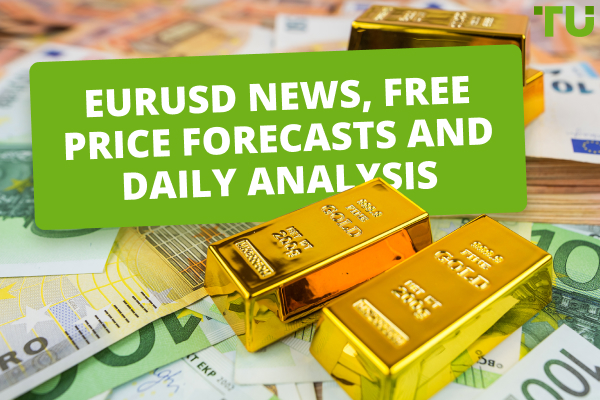How To Use Technical Indicators To Analyze Forex Charts?
Different indicators solve different tasks when analyzing charts. For example, determining trend strength, support and resistance levels, finding an entry point, measuring market liquidity and/or volatility.
Trade indicators help traders and market analysts in data-driven decision-making processes. They offer a wealth of information that is instrumental in various aspects of trading, including risk assessment and mitigation, market timing optimization, identification of volatility patterns, and the facilitation of rigorous quantitative analyses.
In this article, you will get a basic understanding of technical indicators to analyze Forex charts.
Basics of using indicators for analysis
Indicators can be drawn on the chart or the area below the chart (oscillators). For analysis in trading, indicators are calculated with various mathematical formulas and volume data. The calculation method depends on the indicator.
To start using indicators in your trading, follow these steps:
-
Select a Trading Platform. Select a trading platform that offers access to various technical indicators. You can also actively use special technical analysis platforms like TradingView
-
Educate Yourself. You need to understand how different indicators work and what they signal
-
Choose Your Indicators. You can select a few indicators that match your trading strategy and goals
-
Set Timeframes. Determine the timeframes you want to analyze
-
Add Indicators to Your Charts. On your trading platform, add your chosen indicators to your price charts. You'll find an option to insert indicators or studies
-
Adjust Indicator Settings. Customize the indicator settings to match your trading preferences
-
Practice on Historical Data. Use historical price data to practice applying indicators to charts
-
Develop a Trading Plan. A clear trading plan outlines your entry and exit strategies based on indicator signals
-
Review Strategy. Test your trading strategy and indicators on historical data to evaluate its performance
It's important to remember that using indicators as part of a comprehensive trading strategy and combining them with sound risk management practices is essential.
👍 Pros of indicators for analysis
• It allows you to create rules for trading and thus simplify the process of trading in financial markets
• Indicators can be used for automation In financial markets to trigger automated buy or sell orders when particular conditions are met. This is commonly known as algorithmic or mechanical trading
• Even beginners can use indicators as it's helpful for various reasons for their simplicity, risk management strategies, visual guidance, and trend identification
• You can create your unique indicator that needs an understanding of the domain you're working in
• They can be combined to develop more comprehensive strategies or analysis approaches. Combining multiple indicators can give traders and analysts a more well-rounded view of the market
• Another advantage of using indicators is the visual clarity of complex data, making it easier to spot trends
👎 Cons of indicators for analysis
• Indicators can give false signals, also known as "false positives" or "whipsaws." These signals occur when an indicator suggests a particular trading action but doesn't result in a profitable outcome
• Indicators can be redrawn. Traders and analysts need to be aware of this characteristic, as it can impact the reliability of indicators when making decisions in rapidly changing markets
• It may require additional data. You must understand an indicator's data requirements, and ensuring access to the necessary information is crucial for accurate analysis and decision-making
• The indicators may be paid. It's important to consider your budget and requirements when deciding whether to invest in paid indicators
• One disadvantage of using an indicator is that it needs to catch up to current market conditions. Due to this lag, there can be delayed signals, making trade entry and exit points challenging
5 main ways in which indicators are used by traders
-
1
To determine if there is a trend in the market or lack thereof
-
2
Determining the strength of a trend, whether it is fading or strengthening
-
3
To measure volatility, liquidity
-
4
To build trading strategies, plans
-
5
To make trading decisions
To determine if there is a trend in the market or lack thereof
Moving averages judge the trend by smoothing price data over a specified period and comparing the current price to this smoothed average. If the current price goes above the moving average, it suggests an uptrend; if below, it indicates a downtrend.
The Average Directional Index (ADX) is another option. It is a technical indicator helpful for traders to assess the trend's strength and direction. ADX helps traders by providing a numerical value that quantifies the power of a trend, allowing them to determine if a trend is strong or weak.
Indicators in trading and technical analysis can sometimes provide ambiguous or conflicting information. It's essential to understand that no single indicator is foolproof, and trading involves a degree of uncertainty. Learn also information about why technical analysis indicators are redrawn to avoid erroneous decisions based on the indicator.
To learn what types of moving averages there are, in what strategies they are used, and how to combine MA with other indicators, read the article: What is a Moving Average (MA)
Determining the strength of a trend
Indicators determine the strength of a trend by assessing factors such as price momentum and volatility. They typically provide this information through numerical values or graphical representations.
-
1
Numerical Values. Many indicators, like the Average Directional Index (ADX) or Relative Strength Index (RSI), use numerical values. A higher numerical value often indicates a stronger trend, while a lower value suggests a weaker trend
-
2
Graphical Representations. Some indicators use visual cues, like the width of Bollinger Bands or the slope of moving averages. A wider Bollinger Band or a steeper moving average often indicates a stronger trend
These indicators analyze historical price data to quantify the trend's strength, allowing traders to make informed decisions about the market's momentum and whether it suits their trading strategy.
To get examples of how to use the relative strength indicator to analyze the chart, read the article: Bullish and bearish RSI divergence.
To measure volatility and liquidity
Indicators can help measure trading volumes by providing insights into market activity and liquidity. Bollinger Bands are also used in volatility measurement.
The easiest way to measure trading volume is by looking at volume bars or histograms on a price chart. These bars represent the number of shares, contracts, or lots traded during each time interval. A sudden increase in volume can signal a significant shift in market sentiment or interest.
It helps traders assess the market participation level and whether volume confirms or diverges from price movements. High trading volumes often coincide with important market events, such as trend reversals or breakouts, and can provide valuable insights for trading decisions.
Read about different methods of using volume indicators to analyze charts in this article: Top 6 best volume indicators in trading.
To build trading strategies and plans
Indicators help build trading strategies by providing critical insights into market conditions, trends, and entry/exit points. They assist in:
-
Identifying Trends. Indicators like moving averages highlight trend direction
-
Confirming Signals. They validate trading signals from other sources
-
Timing Entries/Exits. Indicators pinpoint ideal moments to enter or exit trades
-
Risk Management. They assist in setting stop-loss levels and position sizes
-
Divergence/Convergence. Indicators can reveal potential reversals or trend strength
To make trading decisions
Some indicators may not give direct signals but generally help make trading decisions. Indicators help trading decisions by providing data-driven insights, including:
-
Confirmation. They validate trading signals from other analyses
-
Timing. Indicators provide timing cues for executing trades
-
Objective Analysis. They offer quantifiable information, reducing emotional bias in decisions
Tips on using indicators for analysis
-
Indicators are not perfect. They may generate false signals, so it is important to use them in conjunction with other forms of analysis. Using indicators in conjunction with other forms of analysis, such as fundamental or sentiment analysis, can provide a more comprehensive understanding of a situation or market
-
Indicators should be back-tested before being used in live trading. This will help you to identify any potential problems with your trading strategy. By analyzing how an indicator would have performed in historical data, you can uncover issues like false signals, lagging indicators, or periods of underperformance
-
You don't need to add too many indicators. This will make the chart cumbersome, and the counter signals must be more accurate. It can result in information overload, confusion, and conflicting signals. This is known as "analysis paralysis"
Some possible risks associated with indicators include false signals, overreliance, and market conditions. To avoid these risks, it's crucial to use indicators as part of a broader strategy, combine them with other forms of analysis, and employ risk management techniques.
Best Forex brokers 2024


FAQs
What are chart indicators?
Chart indicators are technical indicators, i.etools used in technical analysis to interpret and predict future price movements of financial assets, such as stocks, currencies, commodities, or cryptocurrencies.
How do indicators work in technical analysis?
Indicators in technical analysis work by processing historical price and volume data to provide insights into potential future price movements.
What are the best indicators for support and resistance?
Traders often use methods and tools to identify support and resistance. The most popular ones are Horizontal Price Levels, Moving Averages, and Bollinger Bands.
What is the purpose of using indicators in trading?
Indicators in trading serve as tools to analyze historical price and volume data, helping traders identify potential market trends, reversals, and entry/exit points.
Glossary for novice traders
-
1
Broker
A broker is a legal entity or individual that performs as an intermediary when making trades in the financial markets. Private investors cannot trade without a broker, since only brokers can execute trades on the exchanges.
-
2
Trading
Trading involves the act of buying and selling financial assets like stocks, currencies, or commodities with the intention of profiting from market price fluctuations. Traders employ various strategies, analysis techniques, and risk management practices to make informed decisions and optimize their chances of success in the financial markets.
-
3
Volatility
Volatility refers to the degree of variation or fluctuation in the price or value of a financial asset, such as stocks, bonds, or cryptocurrencies, over a period of time. Higher volatility indicates that an asset's price is experiencing more significant and rapid price swings, while lower volatility suggests relatively stable and gradual price movements.
-
4
Risk Management
Risk management is a risk management model that involves controlling potential losses while maximizing profits. The main risk management tools are stop loss, take profit, calculation of position volume taking into account leverage and pip value.
-
5
Index
Index in trading is the measure of the performance of a group of stocks, which can include the assets and securities in it.
Team that worked on the article
Upendra Goswami is a full-time digital content creator, marketer, and active investor. As a creator, he loves writing about online trading, blockchain, cryptocurrency, and stock trading.
Dr. BJ Johnson is a PhD in English Language and an editor with over 15 years of experience. He earned his degree in English Language in the U.S and the UK. In 2020, Dr. Johnson joined the Traders Union team. Since then, he has created over 100 exclusive articles and edited over 300 articles of other authors.
Mirjan Hipolito is a journalist and news editor at Traders Union. She is an expert crypto writer with five years of experience in the financial markets. Her specialties are daily market news, price predictions, and Initial Coin Offerings (ICO).









